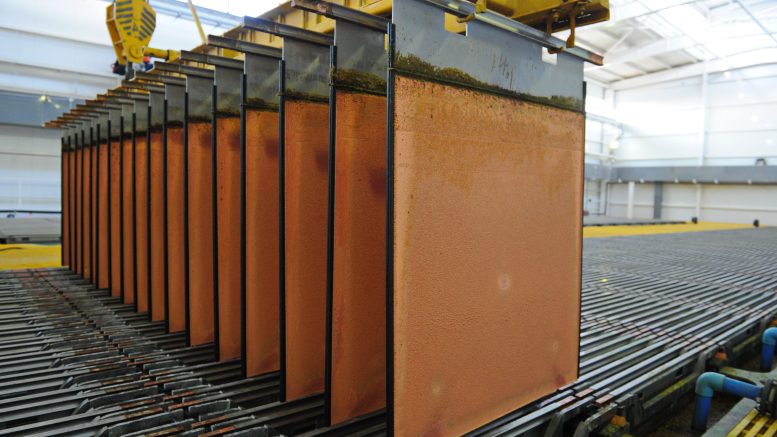BofA Global Research is lowering its price forecasts on key industrial metals for this year and next as headwinds including high energy prices, rising rates and slowing growth increase the risk of a global recession.
The bank has cut its copper price estimate for 2022 by 12.5% to US$3.97 per lb. (US$8,750 per tonne) and by 24% to US$3.29 per lb. (US$7,250 per tonne) for 2023.
“Copper is most exposed to an economic slowdown and prices could fall below US$6,000 per tonne (US$2.72 per lb.) in the coming months; if Europe runs out of gas, prices could decline to US$4,500 per tonne (US$2.04 per lb.),” it wrote in a research note
“After hitting record highs in 1Q22, copper prices have fallen sharply,” the July 6 note stated. “The decline was originally driven by the lockdowns in China, but concerns over a global economic downturn are now compounding headwinds. While a rebound of activity in China may support prices near-term, we are concerned that both rising supply and the energy crisis will bring about further headwinds in 2023. That said, accelerated investment in the energy transition and energy independence will likely help rebalance the market and push prices higher again from 2024 onwards.”
The bank forecasts a copper market surplus in 2023 and 2024–“largely driven by an acceleration of supply growth, which is set to come in at 7.3% YOY in 2023”–but says it expects the copper market “to flip back into deficit by 2025.”
For nickel, BofA has updated its price estimate for this year to US$11.09 per lb. (US$24,439 per tonne), a decline of 28.3%, and in 2023 to US$8.51 per lb. (US$18,750 per tonne), 50% lower than its previous forecast.
The bank notes that “China’s operators have been building conversion capacity in Indonesia” and that nickel supply from the Southeast Asian nation “and a surplus (Class 1 and Class 2) is expected next year.”
As for zinc, BofA has cut its price estimate for 2022 by 16.2% to US$1.52 per lb. (US$3,348 per tonne) and by 19.2% next year to US$1.15 per lb. (US$2,625 per tonne).
“Zinc has been the perennial candidate for structural oversupplies,” the research note stated. “Yet, these massive expected surpluses never really materialized, partially because the mine project pipeline is relatively empty. On top of that, smelters have reduced production over the energy crisis, one reason LME inventories in Europe stand at 55 seconds of annual demand at present. While zinc is not immune to a global slowdown, we believe fundamentals should remain solid going forward.”
The report notes that of the headwinds facing all metals (lockdowns/supply disruptions/inflation; geopolitical instability and tight energy markets), the later is the “most pressing issue.”
“If Europe runs out of gas this winter, this would cause a very destructive downturn,” it states. “While the outcome is more or less binary, i.e. either there is enough energy or not, we have nonetheless taken a cautious stance on the mined commodities, cutting forecasts markedly.”
Looking longer term, however, the bank says it remains “constructive as de-carbonization means increased metals intensity.”
It also points out that energy disruptions “will in all likelihood also prompt an acceleration of investment in energy security and independence,” and that “metals-intensive renewables look to be one beneficiary.”


Be the first to comment on "Bank of America cuts base metal price forecasts on gloomy near-term outlook"